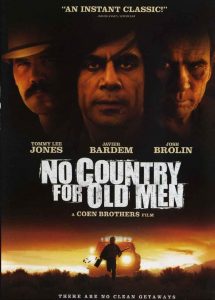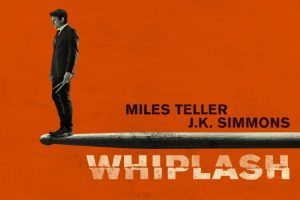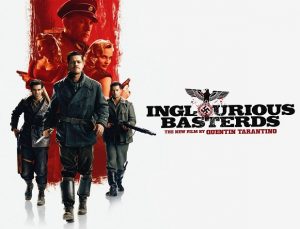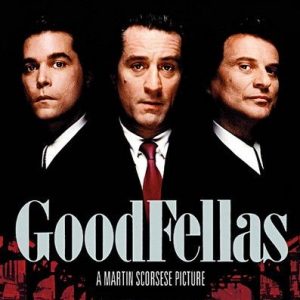
If you’re a writer, cinema must deeply fascinate you’re probably in awe of how certain movie scripts reflect the brilliance of the writers who produced them.
Over the years, I’ve watched hundreds of movies, to the point where I have to scavenge the web to find one that would pique my interest. This was instructive, as films not only infused me with a deeper cultural understanding but also gave me a feel for the rhythm in dialogue, and an ability to distinguish a masterpiece from a mediocre flick. These lessons translate well into the world of writing, so I thought I’d give you a few writing tips based on some of the best movie scripts of all time.
Top writing lessons you can draw from movie scripts:
1. No Country For Old Men (2007) – Notice the poignancy of the everyday encounters

Based on the novel by Cormac McCarthy, the movie is a dark masterpiece that every writer must watch. The script is suffused with chilling bits of dialogue, and even though it’s stylized as a modern Western, it has this eerie, almost paranormal atmosphere to it. My favorite bit is when the villain, Anton Chigurh, steps into a gas station and asks the man at the counter, “What’s the most you’ve ever lost on a coin toss?” Or when he asks the lady in a trailer park, “Where does he work?” three times in a row with a psychopathic stare. It’s in moments like these that characters face death when only a moment ago, they minded their own business. That subtle suggestion of oncoming doom is what makes the script worth studying if you’re a writer.
2. The Godfather (1972) – Make them an offer they can’t refuse

You’ve already watched The Godfather, but perhaps it’s time to give it a second viewing and study the script a bit more. Why did the character of Don Corleone become such a cultural icon (besides the fact that he was portrayed by Marlon Brando in his prime)? It’s the respect he commanded from everyone around him. He was an “OG” before the expression even entered modern parlance. Plus, Vito has this hard-earned wisdom that came from extensive and often brutal life experiences. The biggest lesson a writer can draw from the movie is how to convey an air of dignified power through their characters.
3. Whiplash (2014) – Settle in your writing tempo

A modern example of an unforgettable character is Terence Fletcher from Whiplash. The whole movie is a class of its own not only because of its powerful script but its philosophical implications for any artist. When they sit down in that dim New York bar, and Fletcher says: ‘There are no two words in the English language more harmful than “good job”’ – this sends chills down my spine. It’s a call to all artists to never be satisfied and always strive for more. It’s about always pushing yourself to the limit to see what you’re capable of.
4. Inglourious Basterds (2009) – Pique their curiosity

This list wouldn’t be complete without at least one script from Tarantino, who’s a master at creating suspense and writing dialogue that’s both intelligent and funny. He’s also confident while using sophisticated vocabulary that nevertheless adds spice to the scene, like when Hans Landa says: “Now if one were to determine what attribute the German people share with a beast, it would be the cunning and the predatory instinct of a hawk.”
5. Goodfellas (1990) – Turn it into a classic

This gangster-era classic is filled with scenes you want to come back to. The dialogue here is distinctive in that, it’s deadly serious and yet dappled with hints of comedy. The same device was used in the more recent Scorsese movie “The Irishman,” though to a lesser degree. The characters in his movies always adhere to some kind of code, no matter how corrupt they are. Their actions indicate strong motives, and you can see the internal struggles they go through to get what they want. This is often painful to watch, but it’s also something that every writer can learn something from.
Extra tip: Setting as an extra character
Never underestimate the power of the setting. In movies, it’s quite obvious that the environment is an extra character that looms large in every frame. Think about the greenish atmosphere in The Matrix where the presence of code is nearly palpable. Or how about the psychedelic sets in Kubrick’s Shining, with its labyrinths and architectural impossibilities? Think about how to bring some of this vivid imagery into whatever you’re writing. This will serve as an emotional backdrop for the story on an unconscious level, allow readers to feel more at home, and become regulars in your part of the fictional world. Would you like to share more examples of terrifically written movie scripts and what you’ve learned from them? Next up, you may want to explore the best movie villain quotes of all time.
Hey there, welcome to my blog! I'm a full-time entrepreneur building two companies, a digital marketer, and a content creator with 10+ years of experience. I started RafalReyzer.com to provide you with great tools and strategies you can use to become a proficient digital marketer and achieve freedom through online creativity. My site is a one-stop shop for digital marketers, and content enthusiasts who want to be independent, earn more money, and create beautiful things. Explore my journey here, and don't forget to get in touch if you need help with digital marketing.

